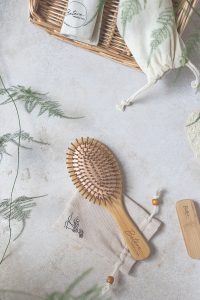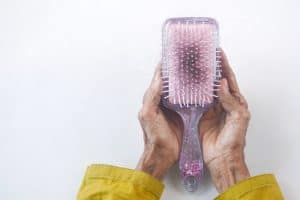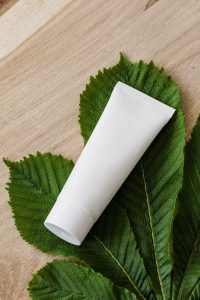Dreaming of having clean hair and shiny locks? Just as you’d clean and maintain your other hair tools, you must also learn how to clean your hairbrush. A clean hairbrush is integral for maintaining the health and vitality of your tresses. Unbeknownst to many, hairbrushes and combs become breeding grounds for dead skin cells, hair product residue, and trapped hair. Therefore, giving them a thorough cleaning every few weeks is imperative.
With regular use, it’s not uncommon for your hairbrush to get clogged with hair, natural scalp oils, and product buildup. A dirty hairbrush not only looks unsightly but can also lead to scalp infections, tangling, and unnecessary tugging on your hair. Learning how to clean your hairbrush properly and regularly can protect your hair from these potential issues.
Why Cleaning Your Hairbrush Matters

When you think about maintaining a clean personal appearance, brushing your hair is top of the list, right? But hold on a second. Ask yourself this: when’s the last time you gave your hairbrush some TLC, too? In fact, keeping a clean hairbrush is more crucial than you might think.
Dirty hairbrushes harbor all sorts of undesirables from dead skin cells to leftover product build-up. That grime, accumulated on your brush bristles, gets transferred right back into your hair every time you use it. That’s not gonna keep your hair shiny and clean, is it?
If you’ve invested in a natural bristle brush, don’t even get us started on how much those bristles can magnetize dirt and oil. It’s because natural bristles —especially boar bristles— excel at distributing your scalp oils throughout your hair. So, when you ignore to clean your hairbrush, these stuck oils along with trapped hair and scalp slough become a haven for bacteria growth.
On the not-so-glamorous side, such dirty hairbrushes can engender scalp infections and boost hair loss.
Keeping your brush bristles free from all the hair and grit not only prevents this lifeline to bacteria, but it also keeps hair tools effective, helping detangle hair without unnecessary tugging.
For the long hair aficionados who wonder how to pull hair out of their brushes without damaging those precious strands, using a rat tail comb —or simply, a pintail comb— makes easy work out of that task.
It’s also worth mentioning the importance of a thorough cleaning for all hairbrushes. No matter if you’ve got a plastic brush or a wooden-handled one, a gentle shampoo, coupled with warm water and a dash of baking soda, will give you an all-over deep clean, even reaching those stubborn synthetic bristles.
By regular cleaning and making the effort to clean a hairbrush, you’ll ensure that each time you sweep your brush through your hair, you’re not providing a free throwback party to old hair product residue, dead skin cells, or any gray fuzz lurking on your brush bristles. While it may seem like a minor detail in your grooming regimen, knowing how to clean hairbrushes affects the health and appearance of your hair significantly.
After all, a clean head of hair begins with clean hairbrushes, right?
Tools You’ll Need to Clean Your Hairbrush
Well, you’ve realized it’s time to clean your hairbrush—the next question is, what’ll you need to accomplish this task? Gathering the necessary items right off the bat saves you time and energy later on. The tools in your arsenal will depend on the kind of hairbrush you have, whether it’s a natural bristle brush, a synthetic bristle brush, or a plastic brush. But don’t fret, we’ll guide you on the specifics for all types.
To begin with, a few constants across the board will help in removing the stuck hair and product residue. A rat tail comb or a pintail comb works wonders to remove all the hair stuck between the brush bristles. You’ll also need a pair of scissors to snip off the tangled hair, making them easier to pull. Don’t forget a clean toothbrush or a small brush to help dislodge trapped hair and product buildup.
Once you’ve removed as much hair as possible, it’s time for a thorough cleaning of your hairbrush. For this, a gentle shampoo or dish soap, some baking soda, and warm water come in handy. In case your brush is extra dirty, keeping some isopropyl alcohol or white vinegar available for a deep cleaning will do you good.
Next, comes the drying process. An absorbent, clean towel and enough time to let your brush air dry are essential. Remember, it’s crucial you let only the bristles air dry and not the whole brush—especially if it has a wooden handle.
And there you have it! With these tools lined up, you’re set to breathe new life into your hairbrush. Whether it’s a boar bristle brush needing some love, a wooden brush due for a clean, or even your daily-use synthetic brush, you now have what it takes. Say goodbye to dirty hairbrushes, dead skin cells, and flyaway fuzz in your hairbrush, and hello to clean hair tools that’ll keep your hair shiny and free from scalp infections. So, ready to clean your hairbrush? Let’s get started!
How to Clean your Hairbrush: Step-by-Step Guide
Cleaning your hairbrush is essential to keep your hair care routine hygienic and your hair shiny. Hair tools such as a dirty hairbrush may carry dead skin cells, product residue, and more. Whether your brush is made of natural bristles (like boar bristles), synthetic bristles, or a mix of both, you can clean it at home with these steps.

Firstly, remove all the hair from the brush. Tools like a rat tail comb or pintail comb will be very useful in pulling out tangled strands or trapped hair. Getting as much hair as you can will assist in providing a thorough cleaning later.
Now, time to prepare a cleaning solution. To clean your hairbrush thoroughly, you don’t need any fancy products, just some gentle shampoo and warm water will do the job, or a little dish soap if the buildup seems excessive. Fill a large bowl or your bathroom sink with warm water and add a few drops of your selected cleanser to make soapy water. For deep cleaning, baking soda is very beneficial. Adding 1-2 teaspoons of baking soda can fight bacteria and remove stubborn buildup.
However, remember, if you’re cleaning a wooden brush or natural bristle brush, keep the handle and base of the brush out of the water as much as possible. Instead, focus on gently scrubbing only the bristles. This precaution is necessary as exposure to water can damage the wooden handle.
Here comes the main part – cleaning the bristles. Dip your brush (bristles facing down) into the soapy solution while gently scrubbing using an old, clean toothbrush. You can also use a cotton swab to clean the base of the bristles. This will help remove leftover trapped hair, scalp oils, and product buildup.
Next, you’ll want to rinse your brush. Hold the brush under running water (warm, not hot) with the bristles facing down. Rinse until you can see that the water is running clear and there’s no soapy foam or residue left. Again, if you’re using a wooden brush be careful not to let the wooden handle soak.
The final step in how to clean a hairbrush is drying it. Pat your brush with a clean towel to get rid of excess water, then let the brush air dry. It’s a good idea to place it bristle-side down on a towel and leave it to dry overnight.
Aside from regular cleaning, it’s also needed to clean hairbrushes more thoroughly on occasion. For a deep clean, preparing a solution with equal parts of water and isopropyl alcohol will do the trick. This is more beneficial for plastic brushes or brushes with synthetic bristles.
Final Thoughts on Maintaining a Clean Hairbrush
Maintaining the health and vitality of your hair requires regular and proper cleaning of your hairbrush. A dirty hairbrush attracts dirt, oil, product build-up, and dead skin cells, which can be transferred back to your hair, leading to scalp infections, tangles, and hair fall. Regardless of the type of hairbrush – natural bristle, plastic, or wooden, cleaning involves removing trapped hair (using rat tail or pintail combs), washing the bristles gently with shampoo or baking soda-infused warm water, and allowing it to air dry.
Regular cleaning enhances the effectiveness of your hairbrush and significantly impacts the health and appearance of your hair. For a thorough clean, especially for plastic and synthetic bristle brushes, isopropyl alcohol can be used. Trust us, the difference a clean hairbrush can make to your healthy hair journey is worth the effort.
Other suggested articles:


